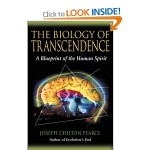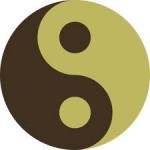As we explore the somatic nature of the three bodies of classical yoga, gross, subtle and causal, we might relate them to the three levels of reality in modern physics: matter, energy and fields. In ‘The Biology of Transcendence, written in 2002,  Joseph Chilton Pearce has a lot to say about how culture itself is a field and plays a major role in inhibiting our capacity for spiritual awakening.
Joseph Chilton Pearce has a lot to say about how culture itself is a field and plays a major role in inhibiting our capacity for spiritual awakening.  It also rather clearly, describes the insanity of the modern electoral process. As such, our on-going homework is to remain present to whatever arises moment by moment, keep resting in the infinite spaciousness of the heart, keep awakening, keep nurturing the field of cosmic creativity!
It also rather clearly, describes the insanity of the modern electoral process. As such, our on-going homework is to remain present to whatever arises moment by moment, keep resting in the infinite spaciousness of the heart, keep awakening, keep nurturing the field of cosmic creativity!
“By the very nature of the human brain we create field effects and are affected by them. In this way, fields become culturally shared and move history accordingly. One of the largest factors in our history, perhaps making that history what it has been, is that culture is itself a field, independent of any of its expressions.” and…
“A new and all pervasive negative field has been growing among people worldwide, an angst or fear without an object and tinged with rage. The angst or fear is fed by the mass media. Saturating all societies our mass media feed into and feed on, this global angst is a typical bio-cultural process. No one knows where it might lead. Already it is a kind of demonic spirit that blows where it will.
This angst ridden energy is nothing less than our longing for transcendence, which, in light of its enormous evolutionary power, must be derailed or subverted by culture, if culture is to survive.
But is culture real? Or is it, like a Tibetan tulpa, a phantom of the human intellect? Once isolated from the intelligence of the human heart, once entrained with and by culture, we interpret cultural survival as our own survival and respond as …culture. We then are culture, just as we are nature and evolution.
Delivery from this massive and ancient error of the mind has been the intent of every great being in history, was surely the intent of Jesus. Tackling culture was the thrust behind the cross. Jesus demonstrated that our true nature is transcendence itself, and his attempt to awaken us to enculturation and its power strikes me as the most outlandish tilting at windmills in history.”


